HARIOV60 conical drip cup compared to Kalita trapezoidal three-hole drip cup brewing experience
Many people are different from me, choosing coffee utensils will always ask which one is better. In fact, I am not particular about choosing what kind of equipment to use, because I think each kind of different instrument always has its own specialty. I am used to grabbing an instrument to extract according to its characteristics.
HARIO launched a conical drop V60 filter cup, as well as a suitable filter paper. Compared in principle-because of the conical shape, the fit of the filter paper is enhanced, so that the coffee powder can be extracted very evenly. At the same time, because the "rib" groove of the filter cup is spiral, it guides the flow of water through the periphery of the filter paper, so that there is a natural whirlpool when the water is injected into the coffee powder, eliminating the action of "circle injection" and strengthening the extraction of coffee. Therefore, this year's coffee exhibition has attracted the attention of many visitors.
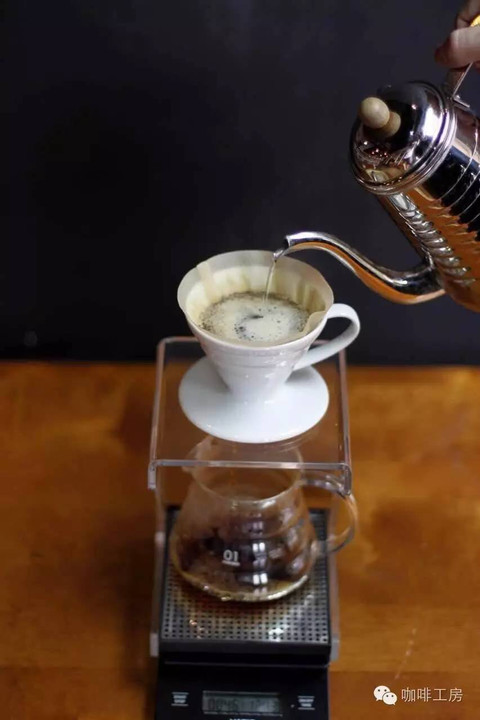
For a novice who drips coffee manually, a three-hole filter cup is the easiest basic model to use:
There are two kinds of kalita three-hole filter cups, one is straight, the other is triangular distribution. The flow rates of the two are different, the three-hole filter cup filter paper does not seem to fit well with the filter cup, at least not as good as the v-shaped one (I have not seen the high-end products of Melita's original factory), but the requirements for water flow control are lower.
Number of holes in kalita:
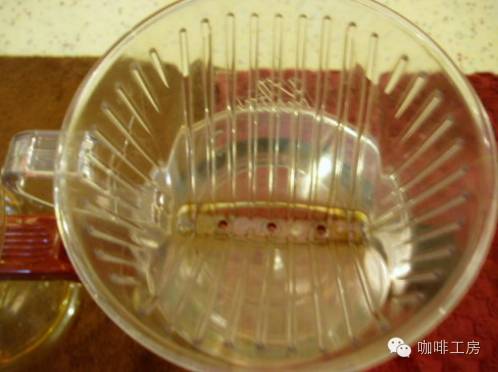
[three-hole trapezoidal filter cup], the widely used Melita filter cup and the Kalita filter cup from Japan were originally designed with only one hole at the bottom of the Melita. Its disadvantage is that when the coffee is worried too much, it often causes the hole to be blocked by fine powder, which makes the coffee soak in the water for too long and makes the coffee bitter. Therefore, the brewing method of adding water is adopted for this kind of filter cup, in the hope that the coffee particles can always float on the water surface. But the relative problem is that the coffee particles soaked in water for a long time will affect carbon dioxide emissions and reduce the extraction rate, so the three-hole Kalita filter cup will be derived later.
Three-hole filter paper:
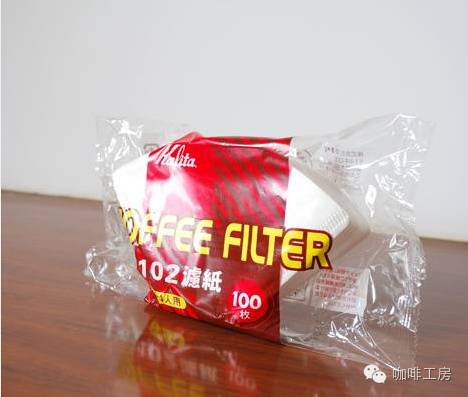
It is worth noting that the last cup is divided into sizes: 101, 102, 103, the corresponding filter paper is also divided into the above model. The 101 model is generally recommended for household use.
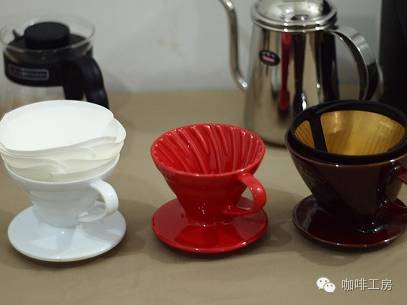
There are also some strange cups, such as the Swiss gold KF-2UX 4, which was originally used in American machines. It is easier to clean than flannel and basically does not need to be replaced as long as it is not squeezed hard. The disadvantage is that due to the metal filter, it is inevitable that a little bit of coffee powder will be filtered into it.
V60 tapered drip filter cup

Rib frame
In the conical filter cup, nothing is more impressive than the curved support design of HARIO. The HARIO V60 uses a long and short spiral convex groove design, which in the eyes of many people is to increase the breathable effect when stewing, but this is actually only one of the design factors. The spiral convex groove is designed to twist and squeeze the scoured water, extend the extraction route and increase the contact time between coffee powder and water at the same time, so as to ensure the complete extraction of HARIO arc filter cup.
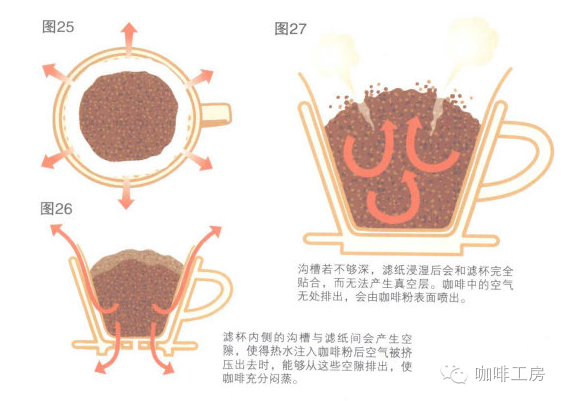
In order to make the taste fuller, stewing must be done before using HARIO V60 filter cup. Stewing refers to soaking the coffee powder layer evenly with a small amount of hot water before coffee extraction, so that the hot water can seep into the hard fiber cell wall of coffee, and the gas inside the cell wall can be discharged through the physical principle of thermal expansion and cold contraction, so that the water-soluble aromatic substances can be extracted more easily by hot water. Prepare in advance for the next coffee extraction.
However, the ribs of the filter cup are not deep, because its purpose is to let the hot air have room to discharge, so the filter cup with neat arrangement and uniform depth is the first choice.
Generally, there are filter cups made of ceramic and plastic on the market, and the choice still focuses on the quality of ribs. Ceramic is a very good choice in heat preservation, but because it is not easy to form clay, it often makes the ribs of different depths. So plastic filter cups are more economical and affordable. At present, there are more copper filter cups on the market, and the material insulation of copper is much better than that of ceramics, and it is also more stable than plastic in molding. The only disadvantage is that the price is too high, so if the budget allows, the copper filter cup will be the best choice.

Use the same filter cup for 2 people, and the same coffee powder "Costa Rica Saint Roman, grinding scale 4, powder quantity 15 grams", and simultaneously heated hot water "the temperature stays at about 90 degrees", the steaming time is controlled at 30 seconds, and finally get the coffee liquid of 200cc.
It is important to note that the "grooves" and filter paper of each filter are different. ]
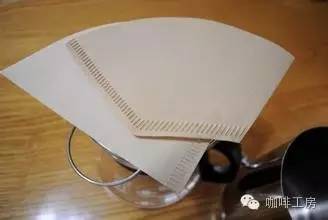
The final two cups of coffee, [coffee flavor] comparison:
[V6O tapered filter cup]: brewed out, taste clean, obviously reproduce the original taste of coffee, the end of the nut sweet.
[Kalita filter cup]: the coffee is relatively strong, even a little over-extracted, indicating that the filtering speed of this filter cup is slower than that of V60, which increases the contact time between coffee powder and water and increases the extraction rate.
[conclusion]:
1. The tapered filter cup does facilitate the brewing and extraction process of coffee, and it is a convenient choice for ordinary individual users.
2. Filter water, V60 is faster than Kalita filter cup, Kalita filter cup basically does not need to consider the size of water flow, because the soaking time is long, can be considered
3. The Kalita filter cup needs to be adjusted in detail in terms of powder quantity, thickness and water temperature, such as medium grinding (crude salt size) and not too high water temperature.
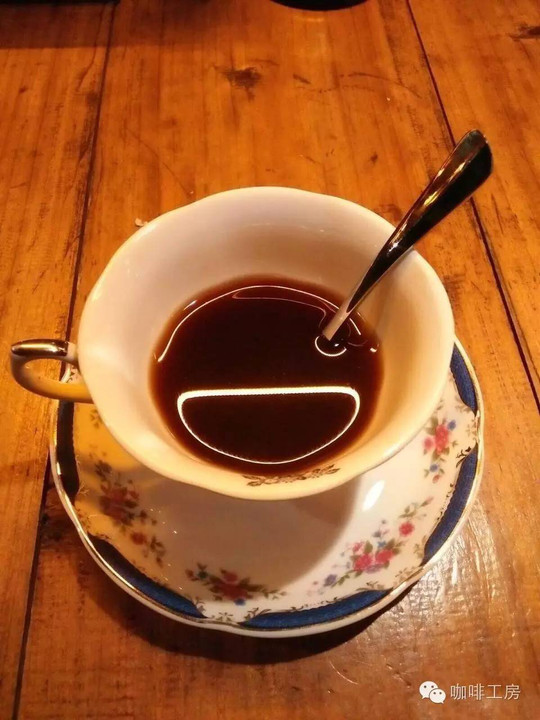
Important Notice :
前街咖啡 FrontStreet Coffee has moved to new addredd:
FrontStreet Coffee Address: 315,Donghua East Road,GuangZhou
Tel:020 38364473
- Prev
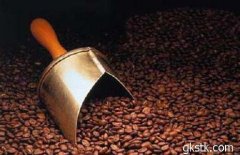
Detailed explanation of coarse and fine grinding degree of coffee powder
The thickness of coffee powder is related to the amount and speed of coffee ingredients released when brewing coffee. Generally speaking, the thickness of coffee powder can be divided into: coarse powder, medium powder, medium powder, fine powder, very fine powder, five grades, is a little dizzy, ha, it doesn't matter! As soon as you look at the comparison picture and the reference, you can instantly understand the thickness, and you can't use so many different thicknesses at ordinary times.
- Next

Detailed explanation and practical parameters of water-powder ratio of hand-brewed coffee
[introduction] it is believed that most hand-brewed coffee lovers will pay attention to every detail of hand-brewing coffee. What should be the ratio of water to powder in hand-brewed coffee? Some say 1:16, some say 1:18, some say 1:10, let's know the different taste parameters of different gouache. Practical parameters for the proportion of hand-brewed coffee [heavy taste] 1 coffee bean grams are higher than black coffee milligrams.
Related
- Beginners will see the "Coffee pull flower" guide!
- What is the difference between ice blog purified milk and ordinary milk coffee?
- Why is the Philippines the largest producer of crops in Liberia?
- For coffee extraction, should the fine powder be retained?
- How does extracted espresso fill pressed powder? How much strength does it take to press the powder?
- How to make jasmine cold extract coffee? Is the jasmine + latte good?
- Will this little toy really make the coffee taste better? How does Lily Drip affect coffee extraction?
- Will the action of slapping the filter cup also affect coffee extraction?
- What's the difference between powder-to-water ratio and powder-to-liquid ratio?
- What is the Ethiopian local species? What does it have to do with Heirloom native species?

